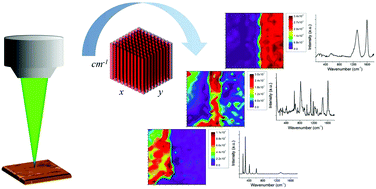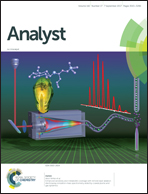Spatial and spectral resolution of carbonaceous material from hematite (α-Fe2O3) using multivariate curve resolution-alternating least squares (MCR-ALS) with Raman microspectroscopic mapping: implications for the search for life on Mars
Abstract
The search for evidence of extant or past life on Mars is a primary objective of both the upcoming Mars 2020 rover (NASA) and ExoMars 2020 rover (ESA/Roscosmos) missions. This search will involve the detection and identification of organic molecules and/or carbonaceous material within the Martian surface environment. For the first time on a mission to Mars, the scientific payload for each rover will include a Raman spectrometer, an instrument well-suited for this search. Hematite (α-Fe2O3) is a widespread mineral on the Martian surface. The 2LO Raman band of hematite and the Raman D-band of carbonaceous material show spectral overlap, leading to the potential misidentification of hematite as carbonaceous material. Here we report the ability to spatially and spectrally differentiate carbonaceous material from hematite using multivariate curve resolution-alternating least squares (MCR-ALS) applied to Raman microspectroscopic mapping under both 532 nm and 785 nm excitation. For this study, a sample comprised of hematite, carbonaceous material, and substrate-adhesive epoxy in spatially distinct domains was constructed. Principal component analysis (PCA) reveals that both 532 nm and 785 nm excitation produce representative three-phase systems of hematite, carbonaceous material, and substrate-adhesive epoxy in the analyzed sample. MCR-ALS with Raman microspectroscopic mapping using both 532 nm and 785 nm excitation was able to resolve hematite, carbonaceous material, and substrate-adhesive epoxy by generating spatially-resolved chemical maps and corresponding Raman spectra of these spatially distinct chemical species. Moreover, MCR-ALS applied to the combinatorial data sets of 532 nm and 785 nm excitation, which contain hematite and carbonaceous material within the same locations, was able to resolve hematite, carbonaceous material, and substrate-adhesive epoxy. Using multivariate analysis with Raman microspectroscopic mapping, 785 nm excitation more effectively resolved hematite, carbonaceous material, and substrate-adhesive epoxy as compared to 532 nm excitation. To our knowledge, this is the first report of multivariate analysis methods, namely MCR-ALS, with Raman microspectroscopic mapping being employed to differentiate carbonaceous material from hematite. We have therefore provided an analytical methodology useful for the search for extant or past life on the surface of Mars.



 Please wait while we load your content...
Please wait while we load your content...